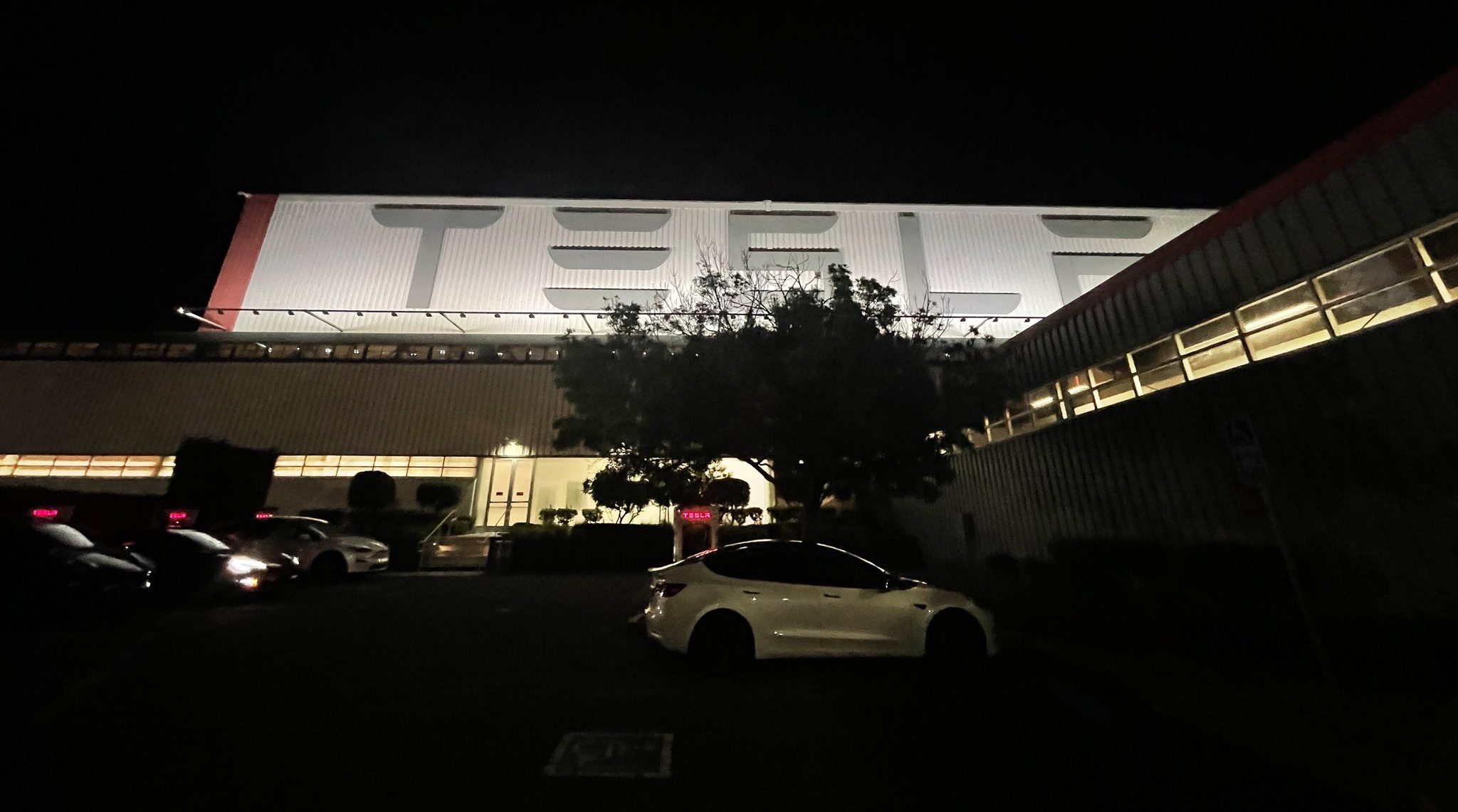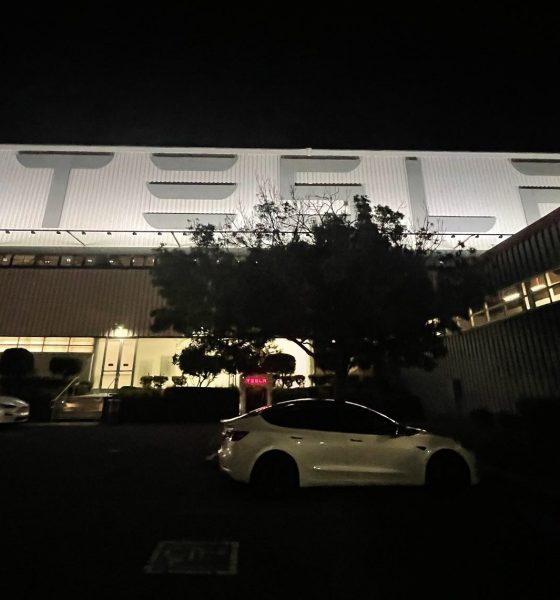

Investor's Corner
Tesla could be ‘the next battleground’ for UAW amid Sweden strikes: analyst
Tesla (NASDAQ: TSLA) could very well be “the next battleground” for the UAW after this Fall’s strikes with Ford, General Motors, and Stellantis, according to Dan Ives of Wedbush. The analyst also said that the automaker’s battle with Scandinavian unions, especially in Sweden, has highlighted a potential for unions in the U.S. to target it, hoping Tesla will be the next unionized car company in the country.
Unions have been one of the focal issues of 2023 in the automotive sector. Ford, GM, and Stellantis just had a multi-week conflict with the UAW that halted production and saw workers indirectly related to production lines, like hauler drivers, join in acts of solidarity.
Tesla has unfortunately found itself in the same situation in Sweden, as the union is trying to force the automaker to sign a collective bargaining agreement. Tesla maintains that its workers have as good or better work benefits without the union.
However, other unions have decided to partake in actions that hurt Tesla in Sweden. Everything from unloading Teslas at nearby ports to picking up the company’s trash has stopped, all in an effort to force the company to make a move it probably will not end up making.
The big picture involving Tesla and unions is starting to catch the eye of analysts, including Ives, who is a tech analyst bullish on Tesla. Ives holds a $310 price target and an ‘Outperform’ rating on the stock, but he is well aware of what the unionization process could bring and how it could complicate the automaker’s U.S. performance, where it is most dominant.
Although Ives writes in a new note to investors that the UAW is very unlikely to succeed in a battle with Musk and Tesla, it is important to recognize that the current situation in Sweden highlights the potential for this issue to spread:
“While the Scandinavian situation is a contained situation that Tesla is battling, it’s an important lightning rod issue around unions globally. With the Shawn Fain-led UAW battle vs. Detroit, which results in GM, Ford, and Stellantis giving in to union demands, the next battleground could be Tesla. We continue to believe it’s very unlikely that unions will have success going after Musk and Tesla in 2024 given its current DNA and anti-union culture.”
The issue to Ives lies in whether Tesla decides to concede to the Swedish union. If it does, he believes it sets somewhat of a precedent for other unions to try and establish terms within Tesla in various regions. If not, it may help the automaker in future unionization attempts, which are likely coming, especially in the U.S., as Fein said after negotiations with Ford, GM, and Stellantis that it would be “the big five or six” in a few years, instead of the current “Big Three.”
Ives said:
“This speaks to why this current dispute and how Tesla handles it politically speaking/negotiations within Sweden is an important issue for the ramifications down the road Musk & Co. might face with other unions globally in this current climate. We will be watching this situation carefully over the coming weeks/months.”
Tesla shares are up just under two percent at 10:45 a.m. on the East Coast.
I’d love to hear from you! If you have any comments, concerns, or questions, please email me at joey@teslarati.com. You can also reach me on Twitter @KlenderJoey, or if you have news tips, you can email us at tips@teslarati.com.

Investor's Corner
Tesla stock closes at all-time high on heels of Robotaxi progress

Tesla stock (NASDAQ: TSLA) closed at an all-time high on Tuesday, jumping over 3 percent during the day and finishing at $489.88.
The price beats the previous record close, which was $479.86.
Shares have had a crazy year, dipping more than 40 percent from the start of the year. The stock then started to recover once again around late April, when its price started to climb back up from the low $200 level.
This week, Tesla started to climb toward its highest levels ever, as it was revealed on Sunday that the company was testing driverless Robotaxis in Austin. The spike in value pushed the company’s valuation to $1.63 trillion.
Tesla Robotaxi goes driverless as Musk confirms Safety Monitor removal testing
It is the seventh-most valuable company on the market currently, trailing Nvidia, Apple, Alphabet (Google), Microsoft, Amazon, and Meta.
Shares closed up $14.57 today, up over 3 percent.
The stock has gone through a lot this year, as previously mentioned. Shares tumbled in Q1 due to CEO Elon Musk’s involvement with the Department of Government Efficiency (DOGE), which pulled his attention away from his companies and left a major overhang on their valuations.
However, things started to rebound halfway through the year, and as the government started to phase out the $7,500 tax credit, demand spiked as consumers tried to take advantage of it.
Q3 deliveries were the highest in company history, and Tesla responded to the loss of the tax credit with the launch of the Model 3 and Model Y Standard.
Additionally, analysts have announced high expectations this week for the company on Wall Street as Robotaxi continues to be the focus. With autonomy within Tesla’s sights, things are moving in the direction of Robotaxi being a major catalyst for growth on the Street in the coming year.
Elon Musk
Tesla needs to come through on this one Robotaxi metric, analyst says
“We think the key focus from here will be how fast Tesla can scale driverless operations (including if Tesla’s approach to software/hardware allows it to scale significantly faster than competitors, as the company has argued), and on profitability.”

Tesla needs to come through on this one Robotaxi metric, Mark Delaney of Goldman Sachs says.
Tesla is in the process of rolling out its Robotaxi platform to areas outside of Austin and the California Bay Area. It has plans to launch in five additional cities, including Houston, Dallas, Miami, Las Vegas, and Phoenix.
However, the company’s expansion is not what the focus needs to be, according to Delaney. It’s the speed of deployment.
The analyst said:
“We think the key focus from here will be how fast Tesla can scale driverless operations (including if Tesla’s approach to software/hardware allows it to scale significantly faster than competitors, as the company has argued), and on profitability.”
Profitability will come as the Robotaxi fleet expands. Making that money will be dependent on when Tesla can initiate rides in more areas, giving more customers access to the program.
There are some additional things that the company needs to make happen ahead of the major Robotaxi expansion, one of those things is launching driverless rides in Austin, the first city in which it launched the program.
This week, Tesla started testing driverless Robotaxi rides in Austin, as two different Model Y units were spotted with no occupants, a huge step in the company’s plans for the ride-sharing platform.
Tesla Robotaxi goes driverless as Musk confirms Safety Monitor removal testing
CEO Elon Musk has been hoping to remove Safety Monitors from Robotaxis in Austin for several months, first mentioning the plan to have them out by the end of 2025 in September. He confirmed on Sunday that Tesla had officially removed vehicle occupants and started testing truly unsupervised rides.
Although Safety Monitors in Austin have been sitting in the passenger’s seat, they have still had the ability to override things in case of an emergency. After all, the ultimate goal was safety and avoiding any accidents or injuries.
Goldman Sachs reiterated its ‘Neutral’ rating and its $400 price target. Delaney said, “Tesla is making progress with its autonomous technology,” and recent developments make it evident that this is true.
Investor's Corner
Tesla gets bold Robotaxi prediction from Wall Street firm
Last week, Andrew Percoco took over Tesla analysis for Morgan Stanley from Adam Jonas, who covered the stock for years. Percoco seems to be less optimistic and bullish on Tesla shares, while still being fair and balanced in his analysis.

Tesla (NASDAQ: TSLA) received a bold Robotaxi prediction from Morgan Stanley, which anticipates a dramatic increase in the size of the company’s autonomous ride-hailing suite in the coming years.
Last week, Andrew Percoco took over Tesla analysis for Morgan Stanley from Adam Jonas, who covered the stock for years. Percoco seems to be less optimistic and bullish on Tesla shares, while still being fair and balanced in his analysis.
Percoco dug into the Robotaxi fleet and its expansion in the coming years in his latest note, released on Tuesday. The firm expects Tesla to increase the Robotaxi fleet size to 1,000 vehicles in 2026. However, that’s small-scale compared to what they expect from Tesla in a decade.
Tesla expands Robotaxi app access once again, this time on a global scale
By 2035, Morgan Stanley believes there will be one million Robotaxis on the road across multiple cities, a major jump and a considerable fleet size. We assume this means the fleet of vehicles Tesla will operate internally, and not including passenger-owned vehicles that could be added through software updates.
He also listed three specific catalysts that investors should pay attention to, as these will represent the company being on track to achieve its Robotaxi dreams:
- Opening Robotaxi to the public without a Safety Monitor. Timing is unclear, but it appears that Tesla is getting closer by the day.
- Improvement in safety metrics without the Safety Monitor. Tesla’s ability to improve its safety metrics as it scales miles driven without the Safety Monitor is imperative as it looks to scale in new states and cities in 2026.
- Cybercab start of production, targeted for April 2026. Tesla’s Cybercab is a purpose-built vehicle (no steering wheel or pedals, only two seats) that is expected to be produced through its state-of-the-art unboxed manufacturing process, offering further cost reductions and thus accelerating adoption over time.
Robotaxi stands to be one of Tesla’s most significant revenue contributors, especially as the company plans to continue expanding its ride-hailing service across the world in the coming years.
Its current deployment strategy is controlled and conservative to avoid any drastic and potentially program-ruining incidents.
So far, the program, which is active in Austin and the California Bay Area, has been widely successful.








